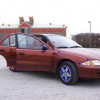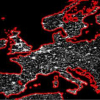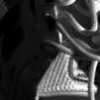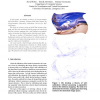111
Voted
ICCV
2005
IEEE
16 years 2 months ago
2005
IEEE
In cross-modal inference, we estimate complete fields from noisy and missing observations of one sensory modality using structure found in another sensory modality. This inference...
86
Voted
ICCV
2005
IEEE
16 years 2 months ago
2005
IEEE
In this paper, we investigate the mathematical problem underlying segmentation of hybrid motions: Given a series of tracked feature correspondences between two (perspective) image...
103
Voted
ICCV
2005
IEEE
16 years 2 months ago
2005
IEEE
Object detection and segmentation can be facilitated by the availability of a reference object. However, accounting for possible transformations between the different object views...
99
Voted
ICCV
2005
IEEE
16 years 2 months ago
2005
IEEE
Lighting variation is commonly handled by methods invariant to additive and multiplicative changes in image intensity. It has been demonstrated that comparing images using the dir...
ICCV
2005
IEEE
16 years 2 months ago
2005
IEEE
The goal of deconvolution is to recover an image x from its convolution with a known blurring function. This is equivalent to inverting the linear system y = Hx. In this paper we ...
109
Voted
ICCV
2005
IEEE
16 years 2 months ago
2005
IEEE
We present a new approach to model visual scenes in image collections, based on local invariant features and probabilistic latent space models. Our formulation provides answers to...
100
Voted
ICCV
2005
IEEE
16 years 2 months ago
2005
IEEE
In this paper we develop a theory of non-parametric self-calibration. Recently, schemes have been devised for non-parametric laboratory calibration, but not for selfcalibration. W...
115
click to vote
ICCV
2005
IEEE
16 years 2 months ago
2005
IEEE
This paper breaks with the common practice of using a joint state space representation and performing the joint data association in multi-object tracking. Instead, we present an i...
99
Voted
ICCV
2005
IEEE
16 years 2 months ago
2005
IEEE
Face recognition under varying illumination remains a challenging problem. Much progress has been made toward a solution through methods that require multiple gallery images of ea...
97
Voted
ICCV
2005
IEEE
16 years 2 months ago
2005
IEEE
The invariance of the similarity measure in photometric distortions as well as its capability in producing subpixel accuracy are two desired and often required features in most st...




